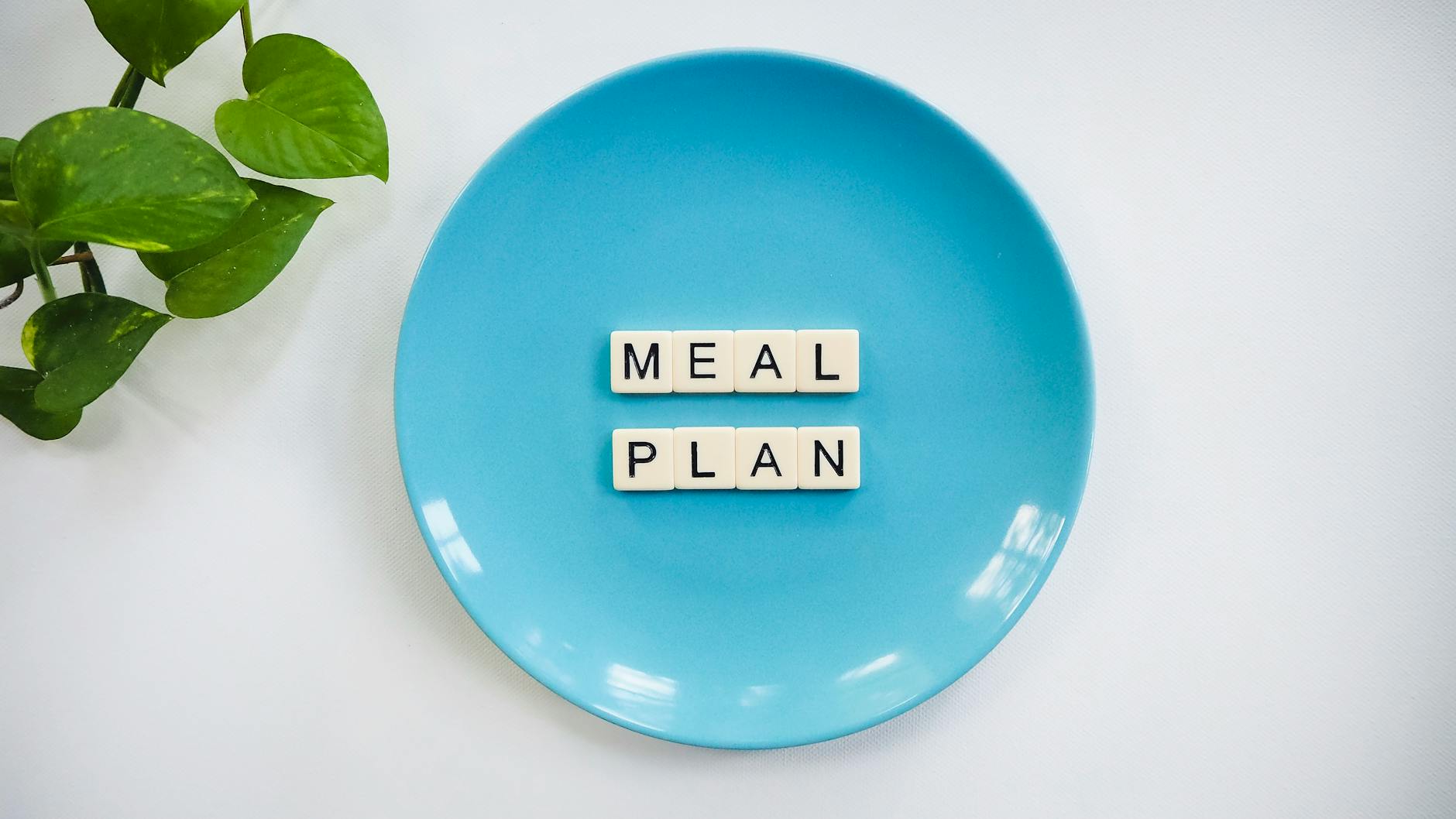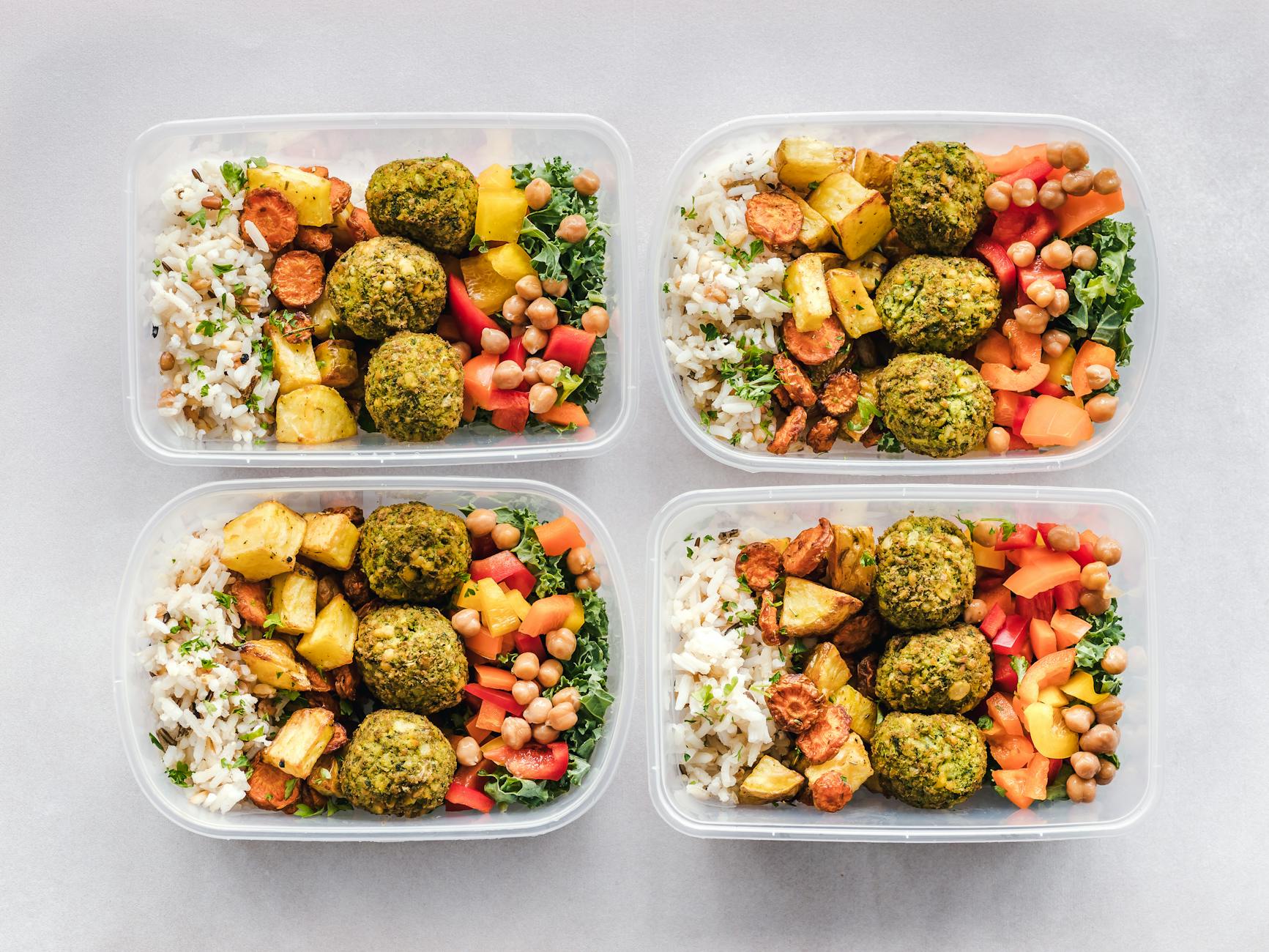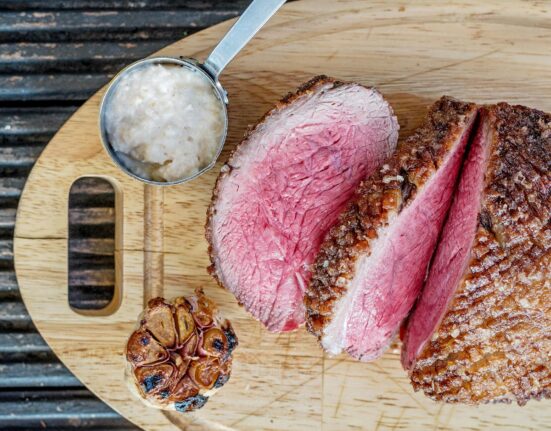Stretching $50 to cover a week of balanced meals might seem impossible, but it’s definitely doable with the right plan. The key is knowing how to plan carefully, prioritize nutrient-dense foods, and make the most of what you already have on hand. By focusing on versatile ingredients, reducing waste, and sticking to a well-thought-out budget, you can create satisfying meals that support your health while keeping costs low. Let’s break it down and show you how.
Set Your Budget and Stick to It
Tackling grocery shopping on a $50 weekly budget can feel daunting, but it’s entirely doable when you approach it with a plan. Think of your budget as a tool—it’s not about restrictions but maximizing the value of every dollar. When you stay committed to a set budget, you take control, reduce financial stress, and get intentional about your eating habits. Let’s break this process down to make it both simple and effective.
The Power of Budget Planning
Setting a firm grocery budget does more than save money—it shifts your mindset. When you know the exact amount you have to spend, every purchase becomes more intentional. No more impulse buys or unnecessary extras that blow your paycheck. Instead, it challenges you to focus on what truly matters: filling your cart with affordable, nourishing ingredients.
Budgeting isn’t just about numbers. It creates a sense of accomplishment when you stick to your plan, almost like winning a game against the temptation of overspending. Plus, it’s empowering—you’ll leave the store knowing you’ve made thoughtful choices rather than walking out with an empty wallet and buyer’s remorse.
If you’re wondering how to begin, here’s a helpful guide to creating a grocery budget based on your unique needs. It’s key to stay realistic—designating just $50 forces you to prioritize essentials over luxuries.

Photo by Tima Miroshnichenko
Break Your Budget Down
To make the most of your $50, divide it into specific categories. Each category addresses the core elements of a well-balanced diet: proteins, vegetables, grains, and pantry staples. When you plan with these in mind, every dollar works harder to provide value and variety.
Here’s how you can allocate your funds effectively:
- Proteins ($15-$18): Prioritize budget-friendly options like eggs, canned tuna, beans, or even a whole chicken. These are versatile, filling, and pack a nutritional punch.
- Vegetables ($12-$14): Buy in-season produce for the best prices, or opt for frozen veggies, which are affordable, nutrient-packed, and long-lasting. Spinach, carrots, and broccoli are great staples.
- Grains ($8-$10): Stock up on budget-friendly carbs like rice, oats, or pasta. These stretch meals without ballooning your budget.
- Pantry Staples ($6-$8): Think of items like cooking oil, spices, canned tomatoes, or broth. These basics add flavor and flexibility to your meals.
Having a breakdown like this is essential. It’s almost like prepping your grocery cart before you’ve set foot in the store. This approach ensures you’re making intentional decisions while avoiding the temptation of gimmicky sales or overpriced snacks. For more tips on budget allocation, check out this article on food budgeting.
Making your way through the store with specific categories in mind turns the trip into a mission. You’ll save time, money, and make balanced eating attainable—even with a tight budget.
Inventory Check: Shop Your Kitchen First
Before heading to the grocery store with your $50 budget, start at home. Your pantry, fridge, and freezer are often brimming with possibilities that can shape your weekly meal plan. By tapping into what you already have, you’ll cut down on waste, make meals more creative, and save a chunk of your budget for when you need it most. Let’s break this down further.
Identify Staples and Leftovers
Think of your kitchen as its own mini grocery store. What staples are sitting in your pantry, fridge, or freezer, waiting to be used? Items like rice, pasta, beans, canned goods, and frozen vegetables can serve as the base for countless meals. By starting with these, you can drastically reduce your shopping list. Leftovers, if stored properly, can be a lifesaver too. That container of cooked chicken or half a roasted vegetable medley can easily transform into a stir-fry, soup, or casserole.
Here’s a quick checklist to evaluate staples and leftovers:
- Dry staples: Check for rice, pasta, oats, flour, or canned goods.
- Fresh or wilting vegetables: Look for carrots, onions, potatoes, or greens that need to be used.
- Proteins: Pull out frozen meat, eggs, or block cheese already on hand.
- Leftovers: Repurpose cooked meats, grains, or even sauces for new recipes.
If you’re unsure how to use certain items, try glancing over these pantry-inspired meal ideas for inspiration.
Organize by Expiration Dates
Once you’ve identified what you have, the next step is prioritizing what needs to be used first. This helps minimize waste and ensures you’re giving older items a chance before they spoil. Start at your fridge—perishable foods like dairy, bagged salads, or opened containers should be the first priority. Sorting your pantry and freezer by expiration dates can reveal hidden gems you may have forgotten.
Try this simple strategy to stay organized:
- Create three sections: Use Now, Use Soon, and Long-Term.
- Place items with the shortest shelf life in the Use Now section (think yogurt nearing its date or fresh berries).
- Shelve items that expire in weeks or months in Use Soon.
- Keep non-perishables or freezer items marked for Long-Term storage (but don’t let them get buried!).
For those needing practical tips, this guide to reducing food waste via organization has plenty of smart suggestions.
Staying proactive with inventory allows you to shop less and make the most of your $50 grocery budget. It’s not just about saving money—it’s about crafting resourceful meals and honoring the food you already have on hand.
Plan Meals with a Purpose
When you’re working with a tight grocery budget, every decision matters, starting with your meal planning. Thoughtfully planned meals not only save money but also provide balanced nutrition and prevent food waste. Setting a clear purpose for your meals—a mix of efficiency, creativity, and nutrition—is the secret to making your $50 stretch without skimping on quality.
Crafting a Flexible Weekly Menu
Instead of planning completely different meals for each day, aim for a flexible weekly menu that reuses ingredients in different ways. This strategy ensures you’re not overbuying and makes meal prep significantly easier.
Here’s how to make an efficient, overlapping menu:
- Choose Base Ingredients: Pick proteins like chicken, beans, or eggs and grains like rice, pasta, or quinoa. These staples can be transformed into multiple meals with slight variations.
- Mix and Match: For example, roast a whole chicken and use it for multiple meals: shredded in tacos, tossed in a salad, or added to soup. Or cook a big batch of rice to serve with stir-fry one night and stuffed peppers the next.
- Plan for Longevity: Incorporate ingredients that last through the week, like fresh carrots, cabbage, or canned beans. Combine them with fresh herbs that add quick flavor.
To simplify this process, this meal planning guide offers actionable tips for turning simple ingredients into versatile, satisfying meals.

Photo by Vegan Liftz
Use Nutritional Balance as a Guide
A well-balanced meal isn’t just about variety; it’s about meeting your nutritional needs on a budget. Each meal should ideally contain a balance of protein, healthy fats, and carbohydrates.
Here’s a quick guide to building balanced, affordable meals:
- Proteins: Eggs, canned tuna, beans, and tofu are excellent protein sources that won’t break the bank. A quarter of your plate should focus on protein.
- Healthy Fats: Incorporate sources like peanut butter, avocados, or olive oil in moderation. These enhance flavor and provide essential nutrients.
- Carbohydrates: Choose cost-effective whole grains such as brown rice, oats, or whole-grain pasta. Sweet potatoes are a nutrient-packed option, too.
- Veggies First: Aim to fill at least half your plate with colorful vegetables to ensure essential vitamins and minerals.
Balancing meals doesn’t have to be puzzling. For more inspiration and ideas, explore Harvard’s guide to building a healthy eating plate.
Incorporating Leftovers Creatively
Leftovers shouldn’t feel repetitive or dull. Instead, think of them as the building blocks for new dishes. Repurposing leftovers not only saves money but keeps meals interesting throughout the week.
Here are a few creative ideas:
- Transform Proteins: Remaining roast chicken can turn into chicken salad, wraps, or soups. Leftover beans or lentils can elevate tacos or hearty grain bowls.
- Use Leftovers as a Base: Mashed potatoes or rice can act as a base for shepherd’s pie or fried rice.
- Go for Quick Dishes: Add leftover veggies to omelets, stir-fries, or pasta dishes for flavor-packed meals in minutes.
For more inspiration, check out these creative ideas for repurposing leftovers.
Planning meals with a purpose does more than stretch your grocery budget—it reduces food waste and ensures your meals remain fresh, delicious, and nutritionally balanced.
Smart Grocery Shopping Strategies
When shopping for an entire week of balanced meals on a tight budget, mastering efficient grocery shopping strategies can make all the difference. These strategies will help you get the most value from your money without sacrificing nutrition or variety. Let’s dive into some practical tips to maximize your $50 spending plan.
Shop Seasonal Produce and Deals
One of the most effective ways to save is by focusing on seasonal, in-season fruits and veggies. Seasonal produce is typically cheaper because there’s more of it available at peak freshness. Additionally, it often tastes better and lasts longer, delivering the kind of value every budget-conscious shopper loves.
- What’s in Season? Plan meals around items like winter squash in the colder months or berries and tomatoes in the summer for unbeatable prices and flavor.
- Check Weekly Ads: Grocery stores highlight discounts on fresh produce weekly. Pair these sales with your meal planning to save even more.
For those new to cooking with seasonal ingredients, Taste of Home’s smart shopping tips explain how to shop fresh while remaining budget-conscious.
Another trick? Look for “reduced for quick sale” produce—these are slightly bruised or nearing their shelf life but still great for soups, stews, or smoothies.
Stick to Store Brands and Bulk Buys
When you’re sticking to a $50 budget, swapping name-brand products for store-brand alternatives is a smart choice. Store-brand items often come from the same manufacturers but cost far less, without sacrificing quality.
- Compare Prices: Check the unit price on shelf tags. Store-brand oatmeal or pasta, for instance, often costs 30%-40% less than premium brands.
- Bulk is Your Friend: Dry goods like rice, beans, and oats are perfect for buying in bulk. They stretch across multiple meals and have a long shelf life.
Non-perishables like canned tomatoes, lentils, or spices are also excellent bulk buys. Check out these money-saving grocery store hacks.
Keeping an eye on unit pricing not only helps stretch your dollar but sharpens your shopping instincts. It’ll quickly become second nature!
Make Use of Digital Coupons and Apps
Modern technology has turned grocery savings into an art form. Many stores now offer digital coupons, loyalty rewards, and cash-back apps that make saving simpler than ever. These tools take a little upfront effort to set up but can lead to big rewards in the long run.
- Sign Up for Store Loyalty Programs: Many programs offer member-exclusive discounts, personalized deals, or even free items based on your shopping habits.
- Cash-Back Apps: Apps like Ibotta and Fetch allow you to earn cash or rewards simply by scanning your receipts.
- Clip Digital Coupons: Before you head out, browse your store’s website or app for digital discounts you can apply at checkout.
Even a few minutes spent combing through coupons can help save $5-$10 on your grocery trip. For more info, see how to shop smartly using modern tools.

Photo by Helena Lopes
By combining these strategies, you’ll add value to your cart while keeping costs under control. The best part? Over time, each of these habits will start to feel effortless, putting you in complete control of your grocery budget.
Meals for the Week on $50
Creating balanced meals on a $50 weekly grocery budget may seem challenging, but with smart planning, it’s absolutely within reach. By focusing on affordable, nutrient-dense ingredients, you can ensure every meal is both satisfying and healthy. Here’s how to make the most of your dollars with intentional choices for each part of the day.
Breakfast Ideas
Breakfast doesn’t have to be complicated or expensive. In fact, starting your morning with simple and cost-effective meals can set you up for success. Here are a few ideas to get you going:
- Overnight Oats: Combine rolled oats with water or milk, and let them soak overnight. Top with a drizzle of peanut butter, a handful of frozen berries, or a sprinkle of cinnamon for an affordable, nutritious start to your day. A bag of oats can last weeks, making it a budget staple.
- Scrambled Eggs with Toast: A dozen eggs usually costs around $2-$3 and can be stretched across several breakfasts. Pair two scrambled eggs with whole-grain toast (store brands are often under $2 a loaf) for a protein and carb duo that keeps you full.
- Fruit Smoothies: Use frozen fruit (bought in bulk) with some yogurt or a splash of milk. Add a scoop of oats or a banana for extra creaminess. Plus, smoothies are a great way to use up items nearing expiration.

Photo by Ella Olsson
Lunch Options
Lunchtime is the perfect opportunity to mix affordable ingredients in creative ways. These ideas are customizable, making it easy to adjust based on what ingredients you have on hand.
- Veggie-Packed Wraps: Use tortillas (budget-friendly brands are often $1-$2 per pack) filled with hummus, shredded lettuce, grated carrots, and a sprinkle of cheese. For added protein, toss in a handful of chickpeas or leftover chicken.
- Chicken Salad: Shred leftover roasted chicken and mix it with yogurt or mayo. Add diced celery, raisins, or chopped apples for crunch and sweetness. Serve over greens or on bread.
- Quinoa Bowls: Cook a batch of quinoa and top it with roasted veggies (like carrots or zucchini) and a dollop of a simple dressing. Quinoa is a nutrient-dense grain that stretches far for its price.
For more inspiration on cheap yet wholesome meal ideas, check out this $50 Aldi meal plan.
Dinner Suggestions
Dinner is often where balance and variety matter most. These budget-friendly options focus on ingredients that can stretch while still feeling hearty.
- Stir-Fries: Use frozen veggies (affordably priced at about $1-$2 per bag) and sauté them with garlic and soy sauce. Add a protein like tofu, chicken, or scrambled eggs. Serve over rice or noodles for an easy, filling meal.
- Pasta Bakes: A box of pasta, a can of diced tomatoes, and shredded cheese can come together to create a comforting bake. Add any vegetables you have on hand, such as spinach or zucchini, to pack in more nutrients.
- Sheet-Pan Roasted Vegetables with Protein: Roast a mix of budget-friendly veggies like potatoes, carrots, and broccoli with olive oil and your favorite spices. Pair with baked chicken thighs or sausage for something simple yet satisfying.
Need more ideas for stretching your grocery haul? Visit this guide on $50 meal prepping.
Snacks and Simple Additions
Snacking on a budget doesn’t mean skipping out on taste. These options are affordable, easy to prepare, and perfect for filling the gaps between meals:
- Popcorn: Buy unpopped kernels (usually $2 or less for a large bag) and pop them at home. Season with salt or spices for a crunchy, low-cost snack.
- Carrot Sticks: Carrots are one of the most budget-friendly veggies. Slice them up and pair with a side of hummus or peanut butter.
- Hard-Boiled Eggs: A quick, protein-packed snack. Boil several at the start of the week and keep them in the fridge for when you need a quick bite.
With the tips above, you’ll not only stay within your $50 budget but also enjoy a variety of meals and snacks that keep you feeling good all week long.
Tips for Long-Term Budget Success
A successful $50 grocery budget can be transformative, not just for a single week but for consistently eating well on a tight budget. Maintaining this balance requires thoughtful planning, smart shopping strategies, and small but impactful habits. Let’s explore some practical tips for staying on track.
Build a List of Staples
One of the smartest ways to maintain long-term success is to gradually build a reliable pantry of staples. Think of staples like the foundation of a house—they’re essential for creating meals with ease and adaptability.
Start with a few essentials each week. Say you buy a bag of rice and a jar of peanut butter one week, pasta and olive oil the next. Over time, you’ll develop a pantry filled with versatile items that can be repurposed in your weekly meals. Common examples include canned goods (like beans and tomatoes), grains (like rice, oats, and quinoa), and spices (like garlic powder or paprika).
Why is this important? Because staples save you from buying everything each week. They allow you to get creative and stretch smaller grocery hauls further. For a breakdown of must-have staples, check out this helpful guide to pantry organization.
Key tips for building your staple list:
- Watch for sales—stock up on items like canned beans or pasta when they’re discounted.
- Buy in bulk for often-used ingredients like oats, rice, or flour.
- Focus on shelf-stable items that offer both flexibility and a long shelf life.
Over time, your pantry becomes an asset, helping you assemble balanced, affordable meals with minimal additional spending.
Batch Cooking and Freezing
Cooking meals in big batches and freezing portions is one of the simplest ways to save time and money. Batch cooking reduces day-to-day meal prep and ensures you’re always just a few minutes away from a homemade, nutritious dish.
Here’s how to effectively batch-cook and freeze meals:
- Use freezer-safe containers: Portion out single servings into containers or bags for easy reheating.
- Cool before freezing: Ensure food has cooled completely before placing it in the freezer to avoid freezer burn.
- Stick to what freezes well: Soups, stews, casseroles, and roasted vegetables are freezer favorites that retain their texture and flavor.
Batch cooking also helps prevent food waste. If you prepare multiple servings of lasagna or chili, you can freeze extras before they go bad. Not sure where to start? This beginner’s guide on batch cooking shares actionable tips.
Another side benefit? Batch cooking cuts down on impulse meal purchases. When you’ve got a ready-to-eat meal in your freezer, you’re far less tempted to grab convenient (but costly) fast food.
Stay Consistent with Meal Planning
Consistency is everything when it comes to staying on track with a strict budget. Meal planning doesn’t just help you save money—it takes the daily stress out of wondering, “What’s for dinner?” It turns chaos into calm by laying out meals ahead of time.
How to make meal planning a habit:
- Start small: Plan just 2–3 meals for the week at first, using ingredients you already have.
- Keep it flexible: Include meals that can adapt to what’s on sale or in season. If ground turkey is cheaper than chicken, adjust accordingly.
- Reuse a template: Find a system that works for you, like scheduling themed nights—Monday pasta, Tuesday tacos, Friday stir-fry. This reduces decision fatigue.
For families or individuals juggling busy schedules, meal prep takes things even further. Spend an hour or two prepping veggies, cooking proteins, or assembling lunches for the week. As a result, you’re less likely to deviate from your plan or resort to costly last-minute meals.
Need beginner-friendly ideas? Here’s a great resource on meal planning essentials.
Consistency doesn’t just help financially—it saves time and even relieves decision fatigue. Over time, you’ll find yourself naturally aligning with healthy, budget-conscious habits that feel second nature.

Photo by Towfiqu barbhuiya
By combining pantry-building, efficient cooking, and consistent planning, you can make long-term budgeting not just achievable but seamless. These habits stack up over time, letting you maintain both financial stability and a balanced diet.
Conclusion
Eating balanced meals on just $50 a week is achievable with smart planning and shopping strategies. By prioritizing versatile ingredients, making the most of pantry staples, and repurposing leftovers, you can create healthy, satisfying meals without overspending. It’s about being intentional with every dollar and meal.
Why not put these tips into action on your next grocery run? Start small—shop your kitchen first, create a flexible menu, and track your spending. It’s a simple yet powerful way to take control of your nutrition and your budget.
Share your favorite budget-friendly meal ideas or shopping hacks! Let’s make healthy eating affordable for everyone.








